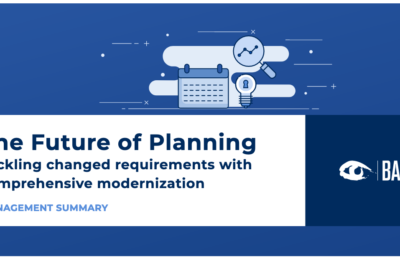Finance services prefer to operate in silos, with specializations in their duties (for example, accounting, FP&A, taxes, audits). These concepts are often based on accounting standards, but they often take into account a practical underlying cost of data content. I’ve yet to see a major corporation that performs accounting and finance operations with 100 percent precision. What I’ve seen is that they all have minimal resources and budgets and must choose a degree of precision that is appropriate for their work.
Surprisingly, there is an area in accounting that has attracted less recognition from tech vendors: the hand-off from the GL next to the consolidation team. About every company’s restructuring staff will be focusing on gathering and loading GL trial balances into a consolidation tool, first doing intercompany (IC) eliminations, making some top line changes, then then moving into financial statements.
Around the same time, the GL accounting staff is running the accounts and doing a number of checkpoints and reconciliations to erase mistakes and posts to GL which will be rectified during the upcoming span.
Some major companies that only once a year merge their accounts precisely because they are private, and their arrangement is clear. Some few people, some once a quarter, some even once a year, reconcile their reports. Of course, it’s because the auditors have requested that you update the procedure and system as you come to me for an evaluation of the program. The specifics of the talks were generally a bit vague.
The two activities do not necessarily fully align, which is strange because they serve at least one common objective. You would expect a very tight collaboration and a software solution.
The consolidation team needs accurate numbers from the GL team, but the control provided by the reconciliations process happens after the fact. Organizations face the issue that the amount of work required to perform those controls far exceeds the time given to the consolidation team to produce their numbers. So, everyone lives with inaccuracy.
Software that is fragmented isn’t helping.
Before OneStream, no vendor had linked the two. Hyperion is supposedly capable of doing so, but the applications are totally fragmented. You can do your consolidation in Hyperion Financial Management, but there is no link with Account Reconciliations Manager.
Hyperion Financial Close Management solution (FCM) is dislocated both from HFM and ARM. It is the same as using an Excel spreadsheet, just online.
Additional vendors like Blackline and Trintech are twofold behind them. They have no restructuring devices and are separated from the remaining financing systems by their task management units. The tasks can be seen but do not actually represent what happened.
There is no ETL method for the Trintech and Blackline that allows users to return to the source info. You cannot ensure that the information you provide the Account Reconciliations team is linked to the information you sent to the restructuring team. Timing variations would definitely exist.
The recon process is the activity to flush out the exceptions as quickly as possible, ideally correcting them ahead of the close. It is about shifting from an “Excel-cover-sheet” process to a risk rating approach. You want to reduce costs by automating the easy pieces of work and bringing forward, in a controlled and effective way, any potential risks.
When a company attempts to increase its competitiveness by building a Shared Services Center (SSC) outsourcing its financial operations, the problems with this vital transfer are more revealed. How do you protect the accuracy of numbers that come from individuals that are based far away from you? If you do not have an effective system for monitoring the operations, ensuring their implementation and supporting the possibility that some jobs can be completed more than once both in GL accounts reconciliations and consolidation processes? People with little experience and who don’t really understand your business?
Vendors of traditional software are falling behind.
If the problems with accessibility aren’t enough to persuade you, the commercial model can. It’s clearly not a good value proposition to own a consolidation engine like HFM, IDL, LucaNet, Sigma conso (Prevero’s OEM product), or Cognos Controller. For several years, most of those implementations have had no major new functionality included. Some have been using Cognos Controller or HFM for more than a decade.
On the GL Reconciliation side, the key functionality of solutions like Trintech and Blackline hasn’t improved much in Trintech since 2006 with AssureNET. Sure, they threw in a few cool tricks, but the cost savings was mainly concentrated on the key features.
Such vendors, on the other hand, will force you to double the IT infrastructure with two servers and users to learn two interfaces. You’d also have to purchase several systems to deal with two entirely different work control modules and two monitoring interfaces. This is a significant financial investment with minimal marginal gains. Except for OneStream, this is accurate for all tech vendors.
“Why will I put myself through this when I can stop it?” is the simple question you must ask yourself. There is only one way to eliminate garbage out: use OneStream to automate your business operations, unify applications, simplify your IT landscape, and improve financial data consistency.
Financial Consolidation, Reporting, and Account Reconciliations are all handled by OneStream.
The OneStream XF SmartCPMTM platform from OneStream Software is a groundbreaking CPM 2.0 solution (XF stands for Extensible Finance). For advanced companies, OneStream XF unifies and simplifies financial consolidation, forecasting, publishing, analytics, and financial data quality.
OneStream is the first and only cloud-based or on-premise system that combines organizational guidelines and controls with the ability for business divisions to report and prepare at higher levels of detail without compromising corporate standards – all within a single program. Extensible Dimensionality® is the name we gave to this special capability.
A SmartCPM portal is characterized by the potential to provide numerous blog waste predictions, schedules, reconciliations, performance analysis, and even more – all together in a single program. Each approach benefits from making use of all the platform provides. OneStream XF avoids dangerous integrating and validating the various items, programs, and modules.
Photo by Patrick Perkins on Unsplash



